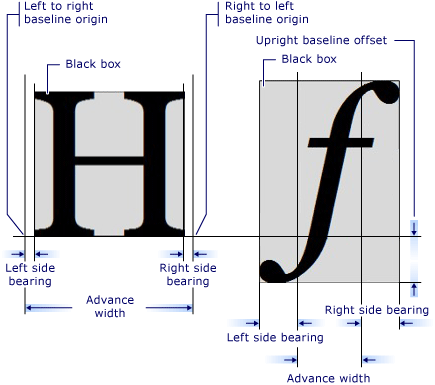Open pavledev opened 4 years ago
ElementHost host = new ElementHost(); host.Dock = DockStyle.Fill;
WpfMath.Controls.FormulaControl formulaControl = new WpfMath.Controls.FormulaControl(); host.Child = formulaControl;
this.Controls.Add(host);
@Happypig375 I get error: the type 'UIElement' is defined in an assembly that is not referenced. You must add a reference to assembly 'PresentationCore'
I get error: the type 'UIElement' is defined in an assembly that is not referenced. You must add a reference to assembly 'PresentationCore'
Well, cause you have to add that reference.
I added references to PresentationCore, PresentationFramework and WindowsBase and now it works. @FoggyFinder Thank you.
How I can do this from WinForm https://github.com/ForNeVeR/wpf-math/blob/master/docs/blurred-text-issue.md
you could try something like this:
var style = new Style
{
TargetType = typeof(FormulaControl)
};
style.Setters.Add(new Setter(TextOptions.TextRenderingModeProperty,
TextRenderingMode.ClearType));
style.Setters.Add(new Setter(TextOptions.TextHintingModeProperty,
TextHintingMode.Fixed));
style.Setters.Add(new Setter(TextOptions.TextFormattingModeProperty,
TextFormattingMode.Display));
var formulaControl = new FormulaControl()
{
Style = style
};@FoggyFinder I tried that code but it still looks same.
I don't know then
Hello. I doubt proper support for Windows Forms is possible for WPF-Math in the nearest future.
For now, we heavily rely on WPF geometry and font rendering support.
As a light workaround, you, for sure, should be able to embed WPF elements into your Windows Forms apps, as explained above.
About the blurry fonts inside of ElementHost in a Windows Forms apps, I've no idea. I guess, we'll need someone with heavy experience in both WPF and Windows Forms to dedug the accompanying issues.
ElementHost.I am leaving the issue open in favor of (eventually, some time) doing it in the "right" way, approach # 1 described above.
@ForNeVeR Ok. Thank you. Can you please add /angle symbol to wpf-math?
Okay, I've taken a look at it, it wasn't too hard (since we now have pretty much platform-neutral rendering pipeline), and got some results. Here's the result of rendering \sqrt 2 on Windows Forms:

The general rendering quality is awful, but I think there are some ways to improve it (like setting some flag on Graphics or something), but there's also a font metric issue: see how the bar is misaligned over the X axis. The bar is drawn using the graphics API (FillRectangle in this case), while the radical sign and the 2 are drawn using the font API. It looks like the bar is drawn correctly, but the font characters are a bit misaligned.
I wasn't still able to figure out what exactly is happening there. If you want to experiment, see the code in the branch experiment/281.winforms: https://github.com/ForNeVeR/xaml-math/blob/51d02e2b5e5c6fa8c9262aec169dc2bfc4353640/src/WinFormsMath/Rendering/WinFormsRenderer.cs#L32-L66
In WPF and Avalonia, we use x and y to determine the text baseline origin. On what the baseline origin is, see this helpful image from Microsoft documentation:

WinForms API, on the contrary, expects us to pass the top left corner of the glyph drawing area.
I've used some tricks to shift the Y axis of the WinForms renderer to correctly apply the baseline (and it, indeed, looks correct), but I haven't found any tricks to do the same for the X axis: it looks like normally the baseline origin should be zero. But, as you see, the zero origin doesn't correspond to our WPF/Avalonia rendering results, and doesn't correspond to what should really happen.
I'm not sure how to proceed. Maybe just ditch the idea of using WinForms Font/DrawString directly, and go with DirectX renderer (#96) instead?
Applying StringFormat.Typographic (whatever that means) to DrawString fixed the problem.
GDI+ normally fits the characters to the pixel grid, which results in more legible characters on low-DPI screens and small font sizes. But it throws the exact font metrics off. So in this case I don't think there's even another option than to go with Typographic.
Can you please add support for Windows Forms Apps?